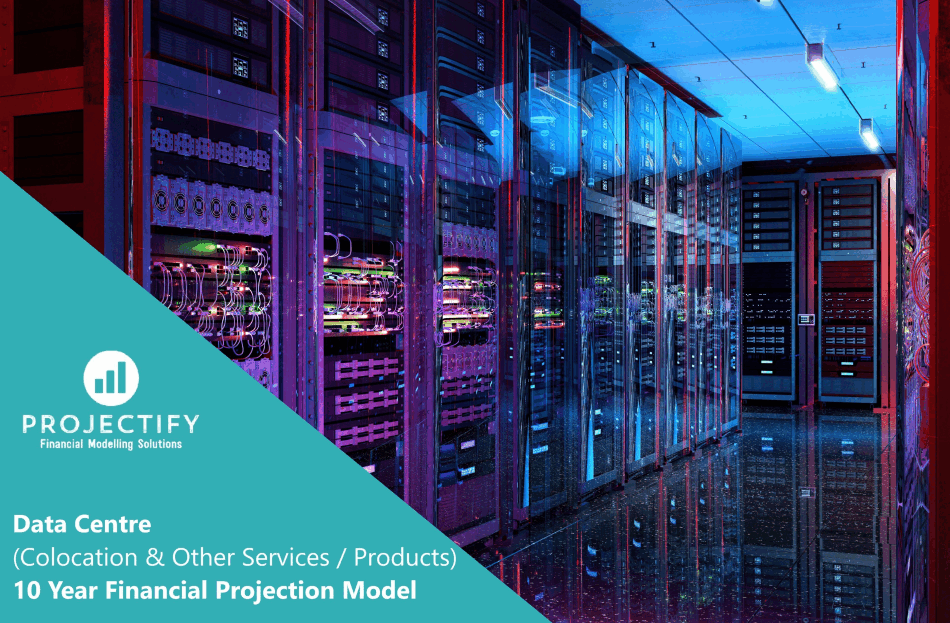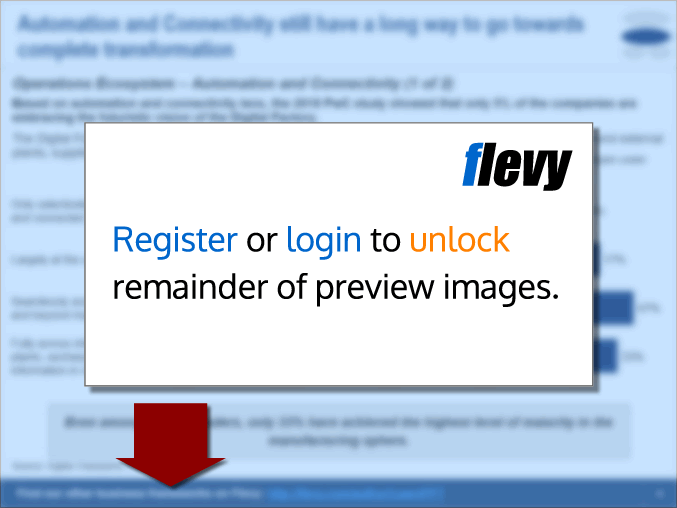Data Centre Business 10-Year 3 Statement Financial Model (Excel XLSX)
Excel (XLSX) + Excel (XLSX)
VIDEO DEMO
BENEFITS OF THIS EXCEL DOCUMENT
- Prepare financial projection for a data centre business
- Visualise projection outputs on dashboard
- Value data centre business
DATA CENTER EXCEL DESCRIPTION
MODEL OVERVIEW
A data centre is a specialized facility that houses critical IT infrastructure, such as servers, storage systems, and networking equipment, which organizations use to store, manage, and process large volumes of data. Data centres provide essential services like reliable power, cooling, and high-speed internet connectivity, as well as security features to protect against physical and cyber threats.
Our versatile and user-friendly Excel model provides a comprehensive 10-year rolling financial 3-statement projection (Income Statement, Balance Sheet, and Cash Flow Statement) with a quarterly timeline, ideal for a new or existing data centre business offering colocation services and non-colocation products and services. It allows the modelling of up to 5 colocation service types (e.g. individual racks, full racks, private cages and private suites) with separate modelling for different billing items including rental, power, bandwidth, remote hands, cross-connects and any other additional services of the users choice.
In addition, the model also includes modelling for up to 8 other non-colocation products and services (e.g. cloud services, managed hosting, disaster recovery etc) alongside cost of sales, transaction expenses, staff costs, marketing, operating costs, taxes, borrowings and fixed assets.
The model adheres to financial best practices, featuring built-in instructions, checks, and input validations. It also includes a comprehensive dashboard summarising projections in table and chart format as well as a discounted cash flow (DCF) valuation calculation helping to assess the business's financial plans and potential value.
KEY OUTPUTS
• Projected full financial statements (Income Statement, Balance Sheet and Cash flow Statement) presented on a quarterly basis across up to 10 years and summarised on an annual basis.
• Dashboard with:
• Summarised projected Income Statement and Balance Sheet;
• Compounded Annual Growth Rate (CAGR) for each summarised income statement and balance sheet line item;
• List of key ratios including average revenue growth, average profit margins, average return on assets and equity and average debt to equity ratio;
• Bar charts summarising income statement and balance sheet projections;
• Revenue breakdowns in table and chart format;
• Charts and graphs showing: cash balance by month, free cash flow generation, cash flow statement breakdown, profit margins, income statement breakdown, net cash vs net income, working capital, valuation and capital structure.
• Discounted cash flow valuation using the projected cash flow output.
• Breakeven analysis
KEY INPUTS
Setup Inputs:
• Name of business;
• Currency;
• First projection year and quarter;
• Naming for colocation service types, additional products and services, staff costs, marketing costs, other expenses, fixed assets and borrowings.
Actuals Inputs:
• Opening balance sheet (for existing businesses);
• Income Statement actuals (for trend analysis);
Projection Inputs:
• Data centre general assumptions including stage of operation (eg in operation, in development or forecast), development period (if applicable), total area and leasable area,
• Data centre development assumptions including costs of land, hard costs, soft costs and capitalizable portion of development costs.
• Colocation service revenue including occupancy rate per service type, power, bandwidth, remote hands, cross-connects and other service types usage and rates.
• Other Services revenue including rates and volumes.
• Other products revenue including selling price, mark-up percentages, volumes, inventory and credit terms offered.
• Direct expenses and direct staff inputs.
• Non-direct staff cost inputs including staff numbers, average salary per full time position, average employer's social security percentage of salary, average annual bonus and bonus payment months.
• Other costs inputs including marketing costs and other operating costs.
• Sales and corporate tax inputs including rate and payment periods.
• Dividend inputs including amount (percentage of retained earnings) and frequency.
• Fixed assets including addition amounts and useful life.
• Borrowings including addition amounts, interest rate and maturity date.
• Share capital additions.
• Discount rate inputs (for valuation calculation).
MODEL STRUCTURE
The model comprises of 9 tabs split into input ('i_'), calculation ('c_'), output ('o_') and system tabs. The tabs to be populated by the user are the input tabs ('i_Setup', ‘i_Actuals' and 'i_Assumptions'). The calculation tab uses the user-defined inputs to calculate and produce the projection outputs which are presented in 'o_Fin Stats', ‘o_Dashboard' and ‘o_DCF'.
KEY FEATURES
• The model contains a flexible timeline that allows for a mix of actual and forecast periods across a 10-year period. This allows projections to be easily rolled forward as forecast periods become actual period.
• Timeline is split on a quarterly basis and summarised on an annual basis.
• The model allows the user to model a data centre at different stages of development and/or operation.
• The model is not password protected and can be modified as required following download.
• The model allows for the following number of underlying categories for each line item (these can be easily expanded if required):
• Colocation service types – 5 service types;
• Other products and services offered – 8 categories;
• Direct expenses – 8 categories;
• Staff costs – 8 direct categories and 8 non-direct categories;
• Marketing costs – 5 categories;
• Other expenses – 15 categories;
• Fixed assets – 5 categories;
• Borrowings – 3 facilities
• Apart from projecting revenue and costs the model includes the possibility to model fixed assets, borrowings (amortising), dividends and corporate tax.
• Business name, currency, starting projection period are fully customisable.
• Revenue, cost and fixed asset descriptions are fully customisable.
• The model included an integrated discounted cash flow valuation using the projected cash flow outputs.
• The model includes instructions, checks and input validations to help ensure input fields are populated accurately.
• The model includes a checks dashboard which summarises all the checks included in the various tabs making it easier to identify any errors.
SUPPORT / MODIFICATIONS
We are keen to ensure our customers are satisfied and find the models useful for their financial projection needs. Our models are developed with the user in mind and include instructions, line-item explanations, checks and input validations to ensure they are as user-friendly and easy to use as possible without requiring extensive knowledge of Microsoft Excel, finance or accounting. If any questions do arise, we are more than happy to assist. We are also happy to support with any be-spoke modifications you may require to the models to better suit your business needs. To get in touch, please send us a message through the Eloquens site or contact us on:
We are also always keen to receive feedback so please do let us know what you think of our models by sending us a message or submitting a review.
Got a question about the product? Email us at support@flevy.com or ask the author directly by using the "Ask the Author a Question" form. If you cannot view the preview above this document description, go here to view the large preview instead.
Source: Best Practices in Data Center, Integrated Financial Model Excel: Data Centre Business 10-Year 3 Statement Financial Model Excel (XLSX) Spreadsheet, Projectify









